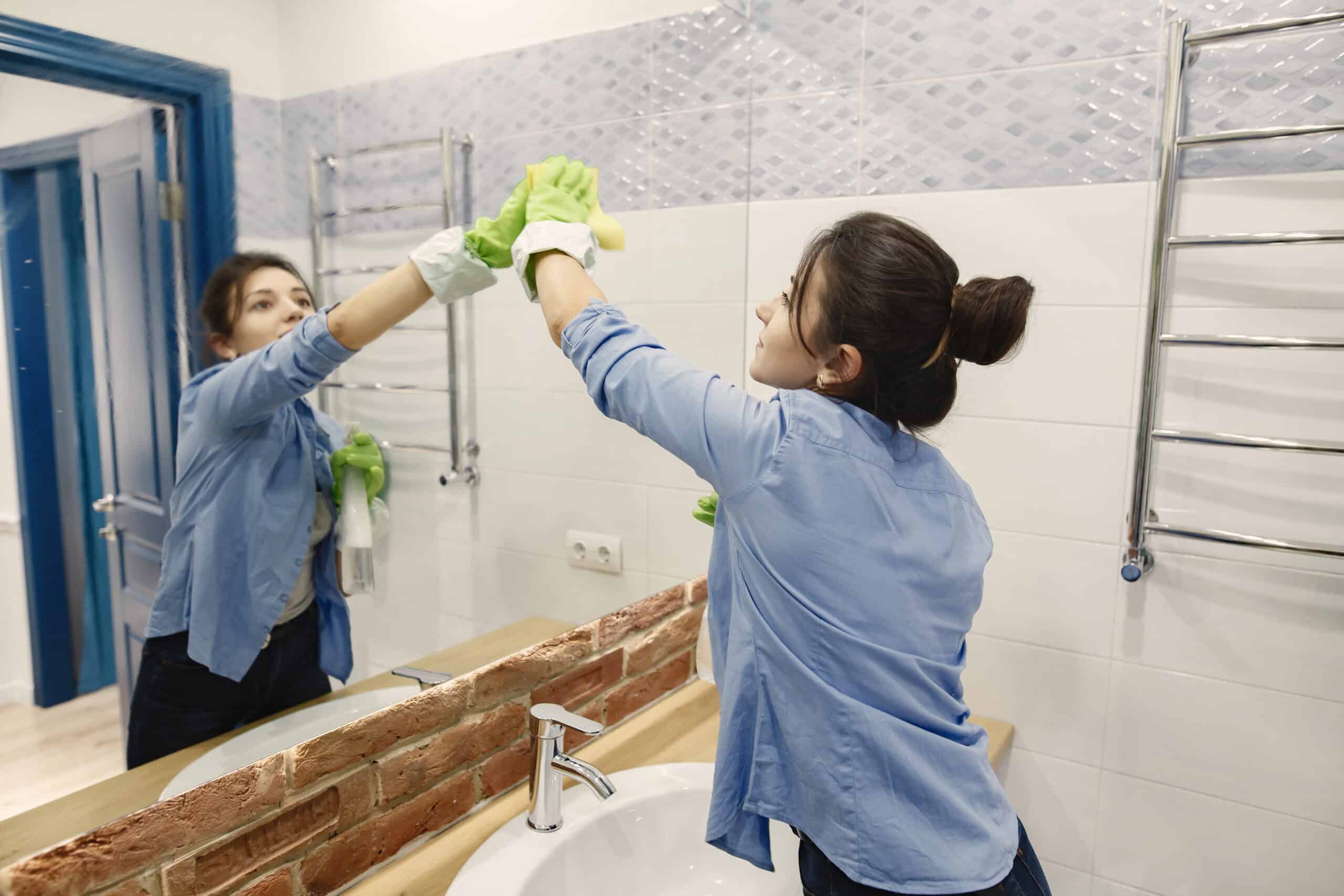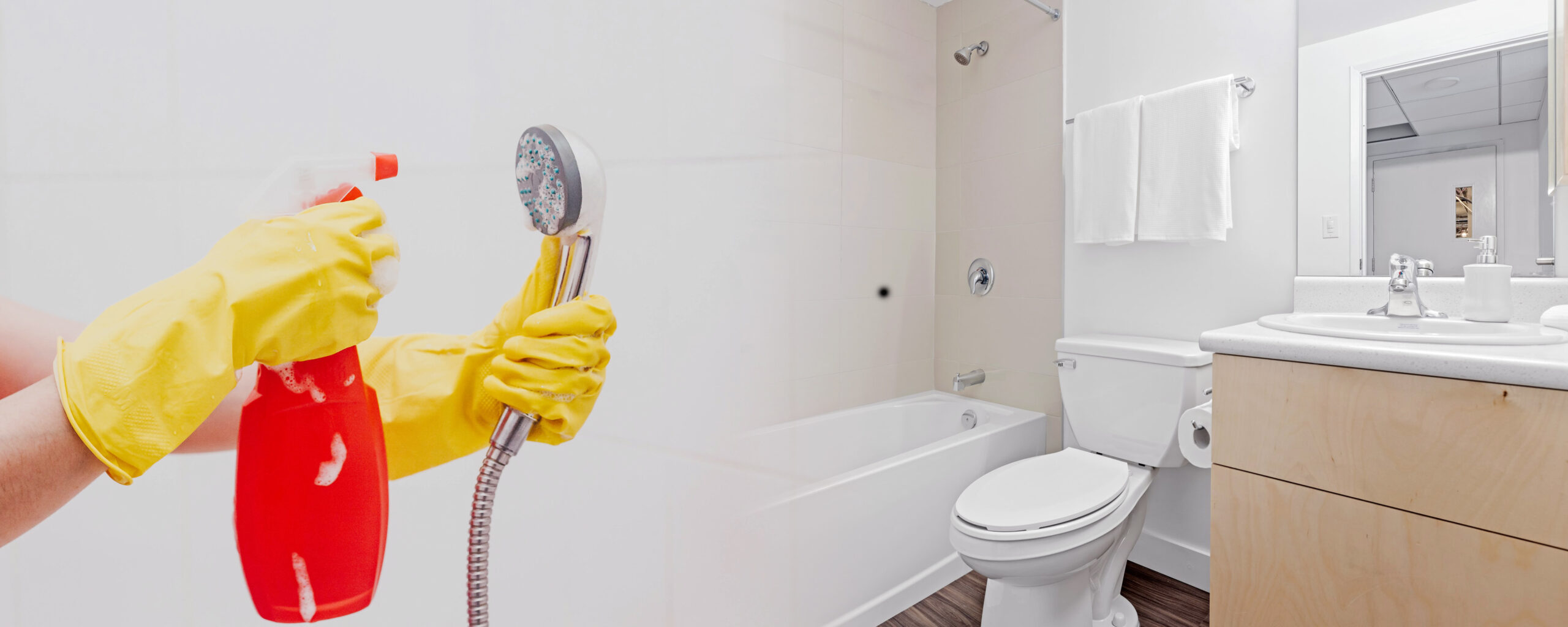How To Remove Limescale From A Toilet?
Calcium carbonate is a substance that is deposited on surfaces in the form of limescale. It is often deposited on surfaces such as kettles, stoves, boilers, pipes, and other surfaces that are exposed to the evaporation of water that is “sharp”. It is a bit more difficult to flush calcium from your toilet bowl than milk. The End of Lease Adelaide cleaning team has compiled this helpful guide if bad limescale build-up in your toilet has become a problem, and you are unsure how to remove it.
Table of Contents
Getting rid of limescale from below the water line in your toilet
Bleach is a well-known household disinfectant, practically unbeatable in killing most microorganisms. However, Bleach is ineffective against calcium deposits as it only lightsens these dark stains. Therefore, limescale can be difficult to remove from your toilet with only household bleach.
Do you know how to remove limescale from a toilet? We are glad to inform you that we have found a natural solution that is both affordable and effective – white vinegar and borax (sodium borate). Pouring this mixture into a bottle will help you to get rid of the calcium buildup in your toilet by simply pouring it into the bottle.
You may also like to read: How To Clean A Bathroom Sink?
As a first step, drain your toilet and spray around the rim and into the toilet bowl. Then, after letting it sit for a few hours, you can scrub it with a toilet brush before flushing it.
If you are experiencing a greater build-up of limescale in your toilet, use a pumice stone or steel wool when you scrub this area – but be careful not to scratch the bowl while doing this. The best way to get rid of limescale in your toilet is to continue to do this once a week by adding four cups of vinegar and letting it sit overnight (it will not harm your septic system).
How to remove limescale from your toilet bowl
Ridding thick limescale from your toilet bowl can be quite difficult and require a certain amount of elbow grease. Directly applying a stronger limescale remover can help remove these deposits, however, if these stains persist, look to purchase a heavy-duty powder cleaner containing phosphate or borax.
Remember you must never mix your cleaning product and always ensure you are wearing rubber gloves and advised eye protection. If you begin making limescale removal a part of your regular cleaning routine, leaving chosen areas to soak for as long as possible, your home will remain limescale clean.
Getting rid of limescale on your toilet rim
With the right products, even the most stubborn limescale can be removed easily. It is inevitable that natural occurring minerals will build up residue everywhere there is water, causing calcium deposits as a result. No exception is made to this rule when it comes to the water jet openings located beneath the rim of the toilet. There are millions of bacteria that grow here, and if they are not treated, they can cause health concerns. In addition to that, it can also interfere with the flow of water into and out of your toilet, thereby reducing its efficiency.
Our recommendation is to create a solution that is composed of 1 part bleach and 10 parts water. Then, remove the lid from the tank and pour the solution into the overflow tubes. You will have to wait for around five minutes before flushing the system. Afterwards, use a piece of wire to scrape out each jet hole. Once this is done, you can clean the area around the jets with a chemical bowl cleaner and sandpaper (be gentle so you do not scratch your toilet). Add the bleach solution into the overflow tube, let it soak for a few minutes, and flush the toilet one last time.
What you need to know about removing limescale from your toilet’s U-bend
The first thing to note is that U-bends are notoriously hard to reach, which is why you need to have the right protective gear such as gloves, protective eyewear, and a small brush before you proceed. The mixtures listed above are all very effective for cleaning out U-bends in your toilet, but you are going to need a little elbow grease to do it.
How to remove limescale from the cistern of your toilet
The inside of your toilet needs to be kept free of limescale if you live in an area where the water is hard.
It can be achieved by draining your toilet tank and disinfecting it with toilet cleaner or bleach spray, leaving it to soak for about 20 minutes. Clean the corners, crevices, and walls of your toilet tank and drop a toilet cleaning tablet inside it to keep it fresh. When you do this one time a month, you will finally be able to conquer that irritating build-up of limescale.
It is more likely that you will find limescale in your area if the water is harder. Check out this handy hard water tool by Like Cleaning Services Group to find out if you live in a hard water area. The tool shows which areas of Adelaide are most affected by hard water.
Limescale removal from your toilet is a relatively straightforward process, as you can see. However, if convenience and time are important to you, you may want to hire a professional to clean your bathroom.






